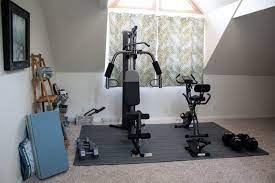An area rug is a versatile and impactful addition to any space, providing comfort, style, and a sense of cohesion to a room. Choosing the perfect area rug involves considering various factors, from size and material to color and pattern. In this comprehensive guide, we’ll walk you through the essential steps to help you find the ideal area rug for your home.
1. Determine the Purpose of the Rug
Before diving into the details, consider the primary purpose of the area rug. Are you looking to define a specific area, add warmth to a room, or enhance the overall design? Understanding the intended purpose will guide your decisions throughout the selection process.
2. Measure Your Space
One of the most common mistakes when choosing an area rug is selecting the wrong size. Measure the dimensions of the space where you intend to place the rug, and consider leaving a border of flooring exposed for balance. Common sizes include 5×8 feet for smaller areas and 8×10 or 9×12 feet for larger spaces.
3. Choose the Right Material
Area rugs come in various materials, each with its own texture, durability, and maintenance requirements. Common materials include wool, cotton, synthetic fibers, and natural fibers like jute or sisal. Consider the traffic in the area and the desired feel underfoot when selecting the material.
4. Consider Pile Height
Pile height refers to the thickness of the rug fibers. Low-pile rugs are easier to clean and ideal for high-traffic areas, while high-pile rugs provide a plush and luxurious feel but may require more maintenance. Choose a pile height that aligns with your comfort preferences and the practical needs of the space.
5. Think About Maintenance
Consider the level of maintenance you’re willing to commit to when choosing an area rug. High-traffic areas may benefit from low-maintenance materials like synthetic fibers, while lower-traffic spaces can accommodate more delicate materials like wool. Check care instructions and choose a rug that fits your lifestyle.
6. Play with Patterns and Colors
The pattern and color of the rug play a crucial role in defining the style of the room. If the room has a neutral color palette, consider a bold and vibrant rug to add visual interest. Conversely, a patterned rug can complement a room with solid-colored furniture. Ensure that the rug’s colors harmonize with the overall color scheme of the space.
7. Test the Rug in the Space
If possible, bring home swatches or small samples of rugs you’re considering. Test them in the actual space to see how they interact with the lighting, furniture, and existing decor. This allows you to make a more informed decision about how well the rug complements the room.
8. Mind the Shape of the Rug
While rectangular rugs are the most common, consider the shape of the space and how a different rug shape might enhance it. Round rugs work well in dining areas or under a coffee table, while runners are ideal for narrow spaces like hallways or entryways.
9. Layering Rugs for Depth
For a dynamic and layered look, consider placing smaller rugs on top of larger ones. This adds depth and visual interest to the space. Experiment with different sizes and shapes to create a unique and personalized design.
10. Coordinate with Furniture
Ensure that the area rug complements the furniture in the space. If the rug is going under a dining table, it should be large enough for chairs to comfortably slide in and out. In a living room, the front legs of furniture should ideally rest on the rug to create a cohesive look.
11. Mind the Rug’s Purpose in Each Room
Different rooms have different requirements for area rugs. In the living room, the rug should anchor the seating area, while in the bedroom, it should extend beyond the bed for a cozy feel. Understand the purpose of the rug in each room to make an informed choice.
12. Consider the Rug’s Theme
Choose a rug that aligns with the theme or style of the room. For example, a traditional rug with intricate patterns might suit a classic or vintage-inspired space, while a geometric or abstract rug can add a contemporary touch.
13. Check for Allergies
If allergies are a concern, opt for rugs made from hypoallergenic materials. Natural fibers like wool are often resistant to dust mites and allergens. Look for rugs labeled as allergy-friendly or suitable for individuals with sensitivities.
14. Budget Considerations
Set a budget for your area rug purchase. Rugs come in a wide price range, and establishing a budget helps narrow down your options. Keep in mind that a quality rug is an investment that can last for years.
15. Explore Rug Retailers and Reviews
Explore various rug retailers, both online and in-store, to find a wide range of options. Read customer reviews to gain insights into the durability, quality, and overall satisfaction of other buyers. This information can be invaluable in making an informed decision.
Conclusion
Choosing the perfect area rug involves a thoughtful consideration of size, material, style, and functionality. By taking the time to measure your space, assess your needs, and explore a variety of options, you can find an area rug that not only enhances the aesthetics of your home but also provides comfort and functionality. Whether you’re looking for a bold statement piece or a subtle addition to tie a room together, the perfect area rug is waiting to transform your living spaces.
Source Links:



